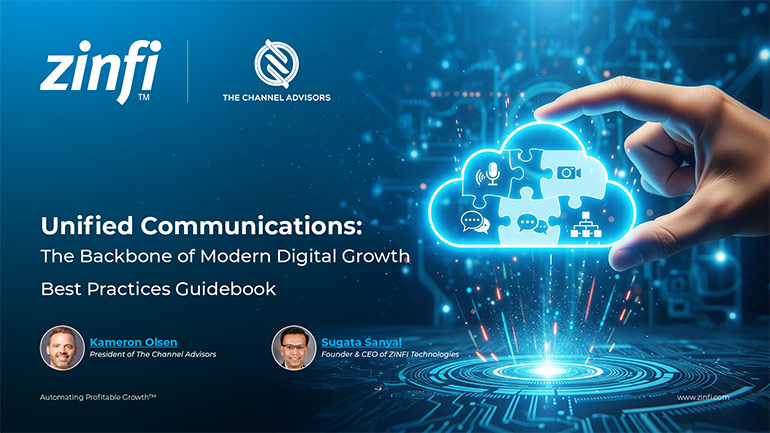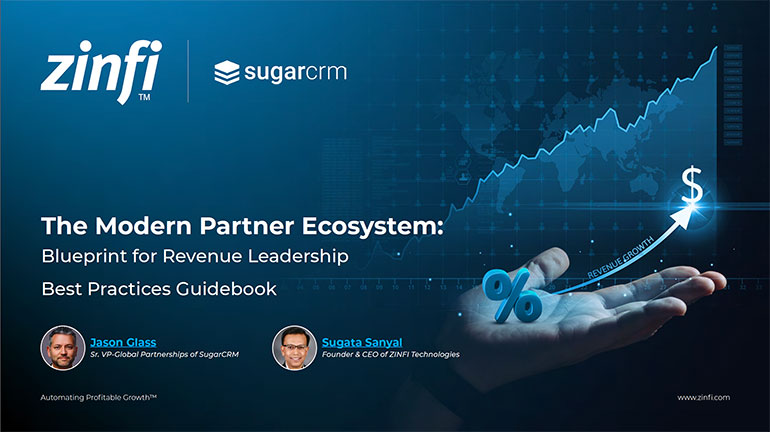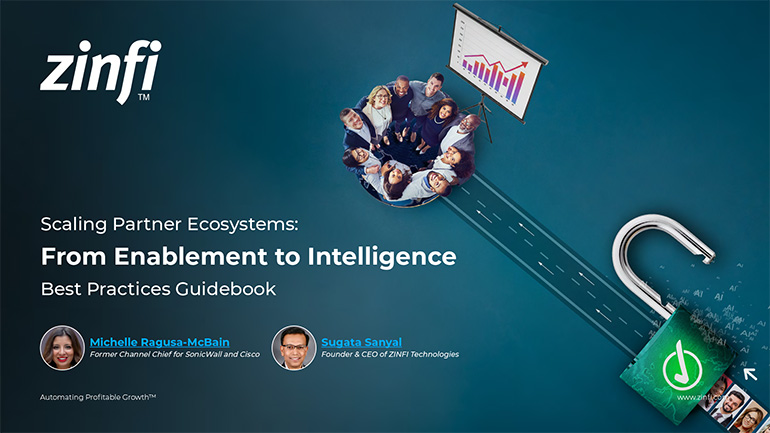Best Practices Articles

5 Factors That Affect Channel Sales
Selling directly is a significant challenge in itself. But consider what happens when you are selling within an indirect go-to-market model via a network of channel sales partners, and add to that mix the complexities of multiple regions, products, and solutions, as well as the constantly changing nature of the partner landscape. Selling in this environment can start to look like rocket science. However, these complexities can be managed if you keep in mind a few core factors that affect channel sales universally. That’s what we will explore in this article.
Let’s begin by briefly considering a well-known model of organizational effectiveness. Almost 30 years ago, McKinsey& Company came up with the 7-S Framework, which has since proven to be a foundational model for describing in a relatively simple way the very complex mechanisms that determine how an organization works.
The 7-S Framework identifies 7 core elements (“S” words) that need to be aligned and coordinated for an organization to function properly. Five of these core elements are of particular importance in channel sales.
- Strategy: Success is always a function of expectation. Organizations that do not treat their channel sales efforts as an integral part of their core go-to-market strategy tend to suffer the most. It is commonplace for conflicts to arise between channel sales management and direct sales management teams. When a company relies on both sales mechanisms, it is incredibly important to clearly define the unique purpose and success metrics for the channel sales organization as opposed to its direct sales team. You may be familiar with the expression, ”The fish rots from the head.” That certainly applies here. While the factors that I will discuss below absolutely matter, if the executive team is not fully transparent and behind a channel sales organization, the other factors really won’t make much of a difference. When you think about go-to-market strategy in the broadest sense, directional attributes tend not to change dramatically over time from most organizations. Once an organization commits to a channel-based strategy, it tends to stick with it for a while—assuming there is an appreciation for the fact that channel development and success in channel sales is a worthwhile, long-term investment. The channel is generally not something an organization can dabble in. However, once that directional investment has been made to drive channel-based sales, the key is to make sure the relevant products and solution strategy are properly aligned with the go-to-market model.
- Structure: To complement the strategic framework for channel sales, the next most important factor is to have a proper structure supporting channel sales. Business-to-consumer (B2C) and business-to-business (B2B) environments require very different channel sales management structures. Understanding this clearly and designing the structure to support various sales motions is critical for success.Many organizations try to address all verticals with one monolithic channel sales model; those organizations tend to fail. The requirements of a retail-based channel sales model are fundamentally different from the requirements of a solution-based sales model that leverages a network of high-technology sales and solutions consultants.A typical channel structure may include both inside and outside infrastructure, which may vary by region and country based on a product’s relevance and other local variables. For example, organizations selling to markets like healthcare, finance and real estate—where local regulations are highly variable—tend to have a channel structure that varies greatly from country to country or region to region. In B2C go-to-market models, on the other hand, channel structure (apart from the distribution of resources) tends to be relatively consistent and symmetrical across geographies, although there may be some regional differences depending on the size of the organization.
- Systems: It is amazing to see that, despite the evolution of various Unified Partner Management (UPM) automation solutions, most organizations selling through the channel simply don’t invest enough in systems that can accelerate channel sales in a productive way. Many channel sales models today are built upon experienced leadership that still deploys go-to-market models that were effective a decade or more ago. These models fail to take into account the fact that end users and channel partners—in both B2C and B2B environments—have changed how they interact and engage with their vendors. Even channel organizations that have a solid strategy and an appropriate channel structure are bound to underperform without a state-of-the-art channel management system.Depending on the complexity of the products and services that an organization is providing, more or less automation may be required. Organizations providing complex enterprise solutions may actually require the full deployment of UCM solutions comprising partner relationship management (PRM), partner marketing management (PMM) automation. On the other hand, if the products the organization is selling are highly transactional, a simple partner relationship management (PRM) automation platform may do the job.
- Staffing: While strategy, structure, and systems are critical, without dedicated professionals nothing will really happen. It is critical that you have the right people in the right roles, whether that is at a strategic level, at various management levels, or at the channel sales operations level, where specific skills are required to operate highly automated systems.It is also essential to have solid training and development programs in place. Most channel organizations tend to invest quite a bit in training their partners, but not so much in training their own channel salespeople. This is a big mistake. Before you can train your partners well, you must invest in thoroughly training your salespeople. Sure, spending lavishly on an annual sales kick-off meeting or President’s Club event on some exotic island can generate some temporary excitement, but that doesn’t add to the competency and skillsets of your organization. It’s better to focus on nuts and bolts. Invest first in training your sales staff, and invest in appropriate channel sales enablement or management tools to truly enable global delivery of training modules.Another important consideration with regard to staffing: Just as the specifics of channel strategy, structure, and system tend to vary considerably from business to business and region to region, so will the precise staffing requirements for channel sales. While selling consumer products in a very large homogenous market like the US may require a replicable structure across different regions of the country, selling those same products across European markets may require very different, country-specific staffing arrangements based on factors like language and market size. A multilingual country like India may require a very different structure than China, where the presence of a primary language (Mandarin) is likely to make staffing configurations easier to implement and scale. My point here is that the issue of staffing requirements is very much a geography-based discussion, once the go-to-market model has been finalized in each region and country.
- Skills: In channel sales, skills requirements vary significantly across verticals, solution types (easy versus complex), pricing points, sales motions, geography, etc. However, there are a few common skills that all channel salespeople need to have: They need to be highly organized, be able to sort through large volumes of communications, stay focused on activities that will drive the numbers, and constantly stay abreast of changes related to the products and solutions that the partners will need help with. A channel sales organization is very different from a direct sales team, and we have observed repeatedly that the skills required for direct skills may not always translate well in a channel sales organization. In channel sales, the channel account manager or channel sales manager is very much a gatekeeper and the delegate who gets things done. In a direct sales organization, on the other hand, it is typically the sales manager who personally gets most of the things done. This is a huge difference that organizations often overlook when they make hiring decisions, and poor performance is often the result.In a typical channel sales organization, required skills can be grouped into various categories—e.g., field marketing at a country or territory level, channel marketing at a regional or country level, product marketing, channel account management, channel sales management, retail sales management, and retail marketing. At ZINFI, when we analyzed multiple channel databases that identify specific channel skills, we identified 127 different titles and/or skills that are required to support most verticals.While in principle some of the skill requirements are fairly general, such as end-user marketing, channel marketing, and sales, when it comes to operational roles such as sales operations and marketing operations, the skills tend to vary greatly from vertical to vertical. Therefore, when you are planning to hire resources from one vertical to another, you need to make sure some of those skills are transferable. If they are not, make sure you have an adequate budget allocated for retraining and skills upgrades to ensure that newly hired employees from a different vertical are successful in their new scope of work.
While the two remaining Ss from McKinsey’s 7-S Framework can impact both partner and vendor organizations independently, the five that I have mentioned above tend to have the most profound impact.
While I have addressed only five core factors that can affect channel sales in this article, there are many more that we could discuss tied to different verticals, regions, cultures, and the varying nature of the products and solutions. However, a channel sales leadership team in partnership with an executive management team would be well-served to begin any improvement efforts by taking a step back and logically thinking through these five Ss to make sure the current strategy, structure, systems, staffing, and skills are fully aligned to achieve profitable growth.
Best Practices Guidebook
 Partner Ecosystem Playbook: Build, Scale, Succeed Best Practices
Partner Ecosystem Playbook: Build, Scale, Succeed Best PracticesDownload for FREE
 Mastering LinkedIn: Building Personal Brands for Social Selling
Mastering LinkedIn: Building Personal Brands for Social SellingDownload for FREE
 Unified Communications: The Backbone of Modern Digital Growth
Unified Communications: The Backbone of Modern Digital GrowthDownload for FREE
 The Channel Sales Playbook: Skills, Strategy, and Growth
The Channel Sales Playbook: Skills, Strategy, and GrowthDownload for FREE
 Blueprints for Vertical Success Best Practices
Blueprints for Vertical Success Best PracticesDownload for FREE
 The Future of Partner Enablement: From Enablement Gaps to Global Advantage
The Future of Partner Enablement: From Enablement Gaps to Global AdvantageDownload for FREE
 Reimagine Sales Development. Build a Smarter Prospecting Engine
Reimagine Sales Development. Build a Smarter Prospecting EngineDownload for FREE
 The Zero Trust Imperative: Fortifying Enterprise Security Against AI-Driven Threats
The Zero Trust Imperative: Fortifying Enterprise Security Against AI-Driven ThreatsDownload for FREE
 PartnerOps Excellence: The Definitive Guide to Scalable SaaS Ecosystems
PartnerOps Excellence: The Definitive Guide to Scalable SaaS EcosystemsDownload for FREE
 The Modern Partner Ecosystem Best Practices
The Modern Partner Ecosystem Best PracticesDownload for FREE
 Partner Marketing Reimagined: Strategies for Agile, Insight-Led Growth
Partner Marketing Reimagined: Strategies for Agile, Insight-Led GrowthDownload for FREE
 Scaling with PartnerOps Best Pratices
Scaling with PartnerOps Best PraticesDownload for FREE
 Leading with Partner Programs Best Pratices
Leading with Partner Programs Best PraticesDownload for FREE
 The Partner-First Blueprint: Scaling Trust, Intelligence, and Ecosystem Growth
The Partner-First Blueprint: Scaling Trust, Intelligence, and Ecosystem GrowthDownload for FREE
 Unlock Scalable Growth with The Partner Marketing Growth Blueprint
Unlock Scalable Growth with The Partner Marketing Growth BlueprintDownload for FREE
 From TikTok to LinkedIn: Social Selling Across the Generational Divide
From TikTok to LinkedIn: Social Selling Across the Generational DivideDownload for FREE
 Scaling Partner Ecosystems: From Enablement to Intelligence
Scaling Partner Ecosystems: From Enablement to IntelligenceDownload for FREE








